The Nature
Observer’s Journal
The Nature
Observer’s Journal

Woodpeckers in Winter
The mid point of winter occurs on February 3, 2011, at 11:20 p.m. From then on we will be closer to the Vernal Equinox than to the Winter Solstice. The days will still be short and the nights cold, but the average daily temperatures will slowly rise. Folks will notice that the sun sets a bit later each week. In spite of some groggy rodent’s fickle shadow, spring will return on schedule -- in about six weeks.
The inevitability of spring's return is never in doubt to the woodpeckers in northeastern United States. Vigorous drumming from unseen percussionists began in mid January. Like the robin’s song, woodpeckers drum to claim territory and attract a mate. Although it’s not their intention their rhythmic beat also announces the changing season.
Unlike other insect-dependent birds, woodpeckers do not migrate when cold weather makes food scarce. They are well equipped to dig out insects and larvae from tree bark and decaying wood. Although beetles and ants retreat for the winter, few are beyond the reach of the woodpecker’s adaptations.
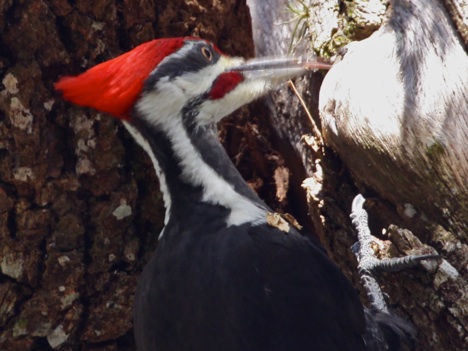
Pileated Woodpecker
Woodpecker beaks are long and sharply pointed with a chisel-shaped tip. The birds drive their fine-tuned boring tools with powerful neck muscles. The ‘peckers’ heads are efficient shock absorbers, with thick skulls and carefully packed brains. Their tongue extends far beyond the tip of the beak because of a unique arrangement that wraps it around the back of the skull. The sensitive tongue is equipped with backward facing barbs and liberally coated with sticky saliva. After drilling into an appropriate spot, the woodpecker feels and extracts an ant, a beetle grub, or some other morsel. Woodpeckers drill like a woodsman chops with an ax. An angled blow from the right, another from the left and wood chips fly. A millisecond before each strike protective translucent inner eyelids snap shut.
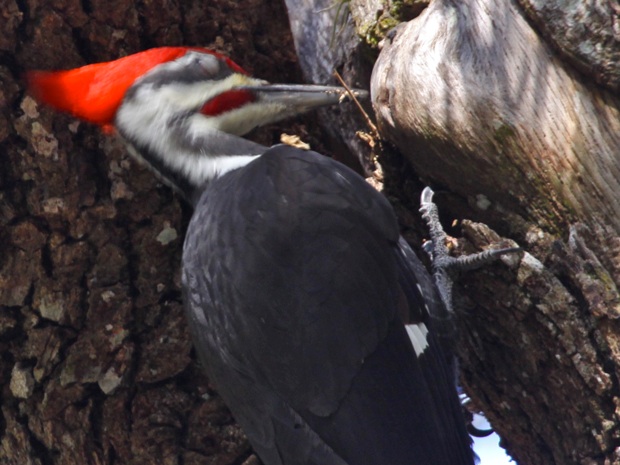
These feathered acrobats move up and down vertical trunks with the ease of a spider. They grasp the tree with short legs and powerful, long-clawed toes. Their toes are arranged in an “X” pattern. Rigid tail feathers prop up the woodpecker’s rear end so the bird can hammer and probe while clinging to the trunk.
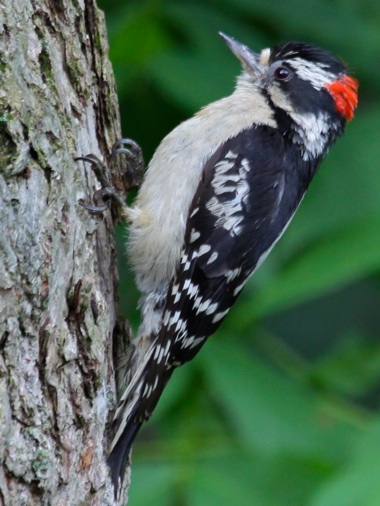
Downy Woodpecker
An upright posture on a vertical surface make take offs and landings challenging. When a woodpecker flies, it drops backward, twists and levels off into an undulating flight. The landing involves a head first, collision-course approach to the tree. It pulls up at the last moment and grasps the trunk using its leg joints to absorb the impact.
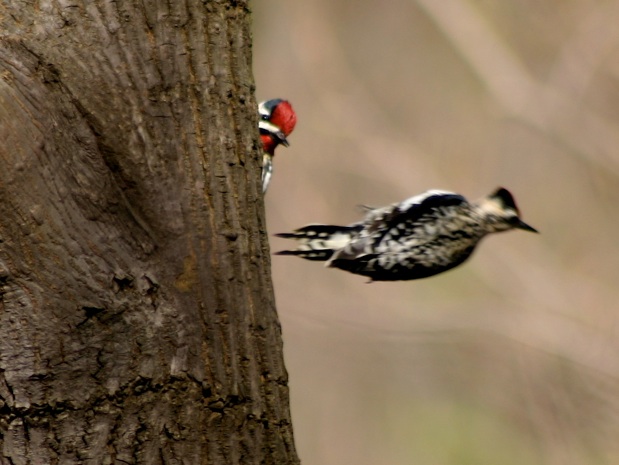
Yellow-bellied Sapsucker
Woodpeckers do not rely solely on insects but supplement their winter diet with seeds and fruit. Red-bellied Woodpeckers consume acorns and Downy Woodpeckers pluck berries from Poison Ivy vines. Most species come to bird feeders for suet and sunflower seeds and provide much enjoyment for feeder watchers.
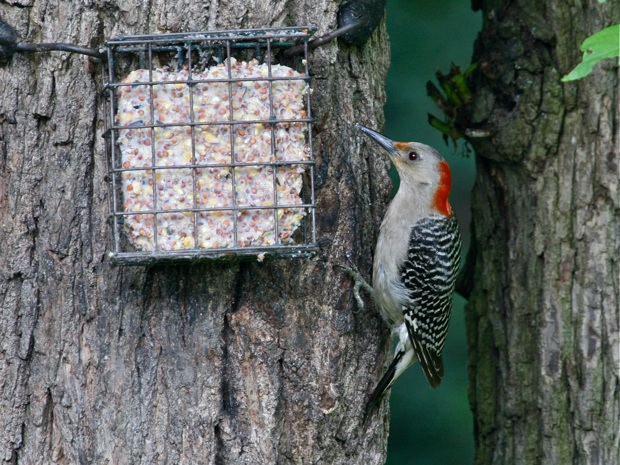
Red-bellied Woodpecker
Woodpecker are the carpenters of the forest. Their cavities provide nest holes and winter roosts for many other animals. There’s a good chance the chickadees, nuthatches and titmice at your feeder hatched in a woodpecker hole. Flying squirrels also breed in abandoned woodpecker nests, and Gray Squirrels use them for winter shelters and storing acorns.
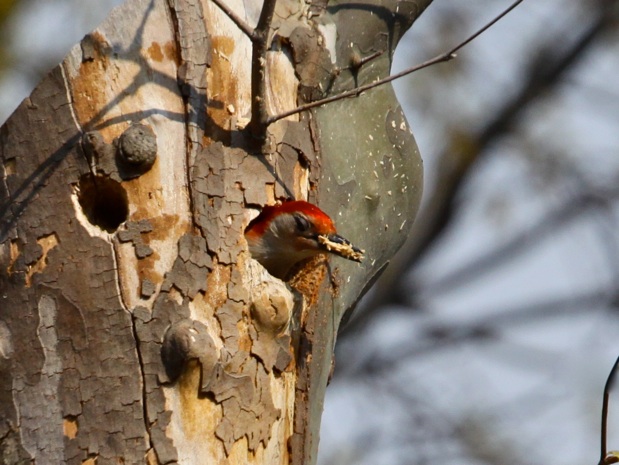
There are seven woodpecker species in Pennsylvania. Their numbers and diversity reflects its richness of tree species and tree ages. Woodpeckers need standing dead wood to excavate nest holes and roost cavities. Dead limbs on the older oaks and maples are ideal for Hairy Woodpeckers and Red-bellied Woodpeckers. Downy Woodpeckers nest in more open woods or forest edge, in the decayed stub of tree, usually a locust or maple. Northern Flickers and the crow-sized Pileated Woodpeckers find the Sycamore trees very satisfactory.
Sycamores have hard wood and hollow centers. So do many oaks. Woodpeckers seek the ones with the best resonance to enhance their drumming. Enjoy their performance. Spring is on its way.

View the Nature Observer’s Gallery of woodpecker photos, Los Carpenteros, the forest carpenters.
Chuck Tague
Tuesday, January 25, 2011
